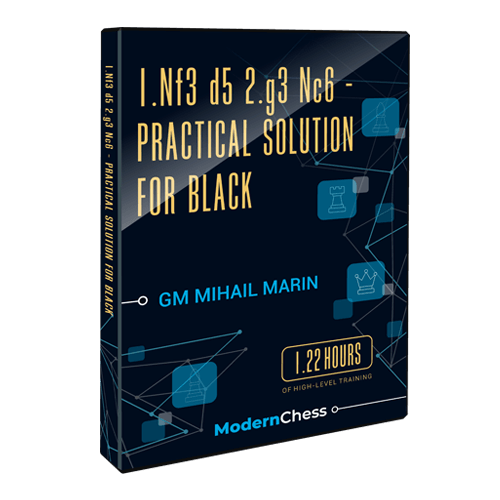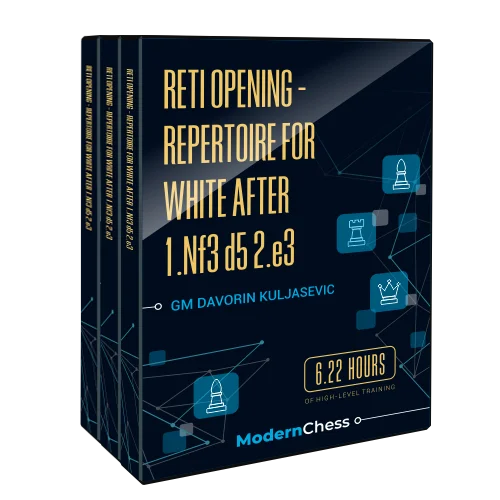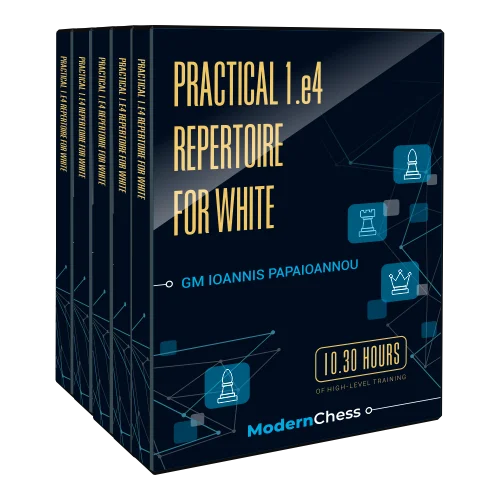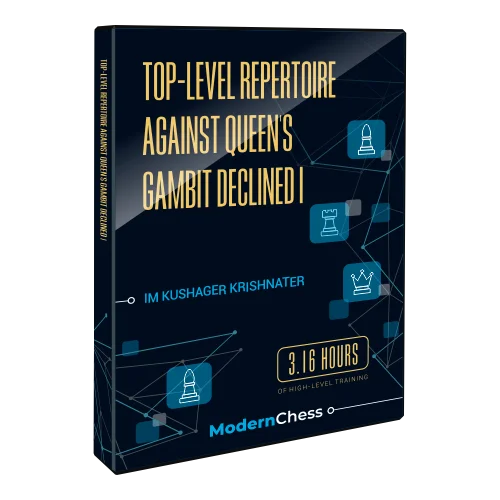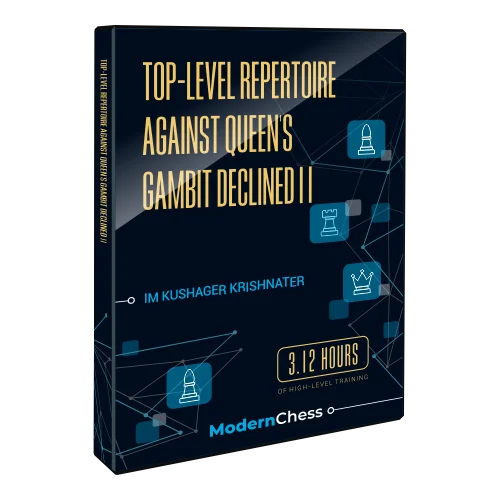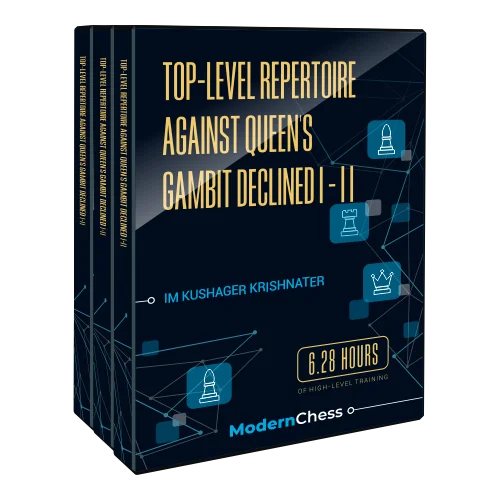The main Reti Opening move order can be quite irritating, depending on the repertoire of the player with Black. In most lines, it is almost impossible to force White to deviate from his flexible setup, based on a later d2-d3 and an attack against the center with either c2-c4 or e2-e4.
Chigorin never met Reti over the board. The Russian player passed away in 1908 when Reti just started to participate in important tournaments.
However, their ideas can lash, as this database clearly shows.
1.Nf3 d5 2.g3
The main Reti Opening move order can be quite irritating, depending on the repertoire of the player with Black. In most lines, it is almost impossible to force White to deviate from his flexible setup, based on a later d2-d3 and an attack against the centre with either c2-c4 or e2-e4.
Things would become more concrete and easier to handle with Black if White was induced to play d2-d4. As long as Black did not play …e7-e6 in the meantime, this would not transpose to a Catalan.
If Black maintains the possibility of developing his light-squared bishop actively, the combination between g2-g3 and d2-d4 tends to be harmless.
2…Nc6!? – This move, typical for the Chigorin Defence, seems to be the best solution to the complex problem posed above. The principled answer is 3.d4 when Black achieves his first aim. White has agreed on combining the fianchetto with d2-d4, in a moment when the h3-c8 diagonal is free still. On the other hand, Black still needs to justify the knight’s development to c6. Unlike in the genuine Chigorin opening, White has not played c2-c4 yet, making the latent pressure on d4 sterile, at least at this stage.
The current database is designed to provide a complete repertoire after 2…Nc6.
The first 5 chapters are dedicated to the position arising after 2…Nc6 3.d4 Bf5.
According to my analysis, this is the most effective way of developing the bishop. Black’s main idea is to cause White certain queenside discomfort with …Nb4. Besides that, f5 is not a bad square for the bishop in general. On the other hand, 3…Bg4 is more speculative, aiming at starting tactical complications. According to my analysis, White should be able to retain a palpable plus.
Chapter 1 of the database deals with passive moves such as 4.a3, 4.Nh4, and 4.c3. As proven by my analysis, in these cases, Black fully justifies his concept.
Chapter 2 features the dynamic 4.c4!?. This is the most desirable approach from a strategic point of view. If White could play like this without any drawbacks, Black’s developing system would be pointless.
However, due to the bishop’s presence on f5, the mainline below implies material sacrifices with unclear consequences.
The main crossroads arises after 4…e6 5.Bg2 Nb4
At this point, White has to choose between the passive 6.Na3 and the principled 6.0-0. I prove that Black manages to hold his own in the arising complicated positions. In this chapter, you will find a handful of new ideas.
The main subject of Chapter 3 is the position that occurs after 4.Bg2 Nb4! 5.Na3 e6 6.0-0 Be7 7.c3 Nc6
The knight has returned on its previous square, but now White faces the positional threat …Bxa3. At this point, White has a wide range of possible continuations – 8.Nc2, 8.c4, 8.Qb3, and 8.Qa4.
The current chapter deals with 8.Nc2, 8.c4 and 8.Qa4. In all these cases, Black is able to neutralize White’s pressure.
Chapter 4 examines move 8.Qb3 which is the most harmonious way of continuing the development. Besides, it gains a tempo by attacking b7. The main position of the chapter arises after 8…Rb8 9.Bf4 Nf6 10.c4 0-0
White has reached some sort of Catalan setup, but his development is not optimal. The main drawback of his setup consists of the fact that the knight on a3 is far from the squares e4 and d5, allowing Black to play for a comfortable blockade on light squares.
Chapter 5 covers 4.Bg2 Nb4 5.Na3 e6 6.0-0 Be7 7.Ne5!?
The low popularity of this move must be caused by the poor practical results achieved with it. However, White is likely to retain a small “Catalan plus” against the main continuation rehearsed in practice.
The main idea behind the last move is to prevent …Nc6.
At this point, I suggest 7…f6!? which appears to be a novelty. After long hesitations, I came to the conclusion that Black needs to react this way.
Black weakens e6 a bit and deviates from the natural course of development, but gains two tempi for gaining control over many squares and even starting a kingside attack.
Chapter 6 is dedicated to the Reversed Pirc arising after 1.Nf3 d5 2.g3 Nc6 3.Bg2 e5 4.d3 Nf6 5.0-0 Be7
This position can be approached in various ways. One can write a thin book on it since this is the Classical Pirc with reversed colors, or just get some orientations. Pirc is one of my favorite openings with black, but with reversed colors, I do not feel that White’s extra tempo promises him chances for an advantage. At least not if Black plays solidly.
In many cases, …e5-e4 either leads to simplifications or ensures Black some space advantage.
The last Chapter 7 considers the Reversed Benoni arising after 1.Nf3 d5 2.g3 Nc6 3.c4 d4
In the proper Schmidt Benoni, Black faces problems generating counterplay. White’s extra tempo in the position with reversed colors does not change much.
